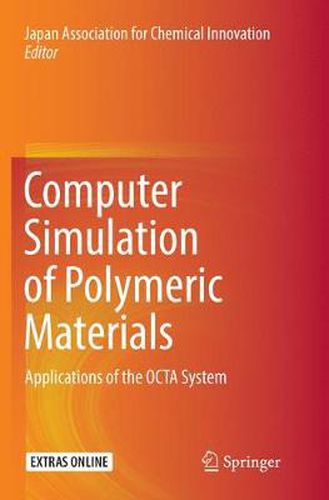Readings Newsletter
Become a Readings Member to make your shopping experience even easier.
Sign in or sign up for free!
You’re not far away from qualifying for FREE standard shipping within Australia
You’ve qualified for FREE standard shipping within Australia
The cart is loading…






This book is the first to introduce a mesoscale polymer simulation system called OCTA. With its name derived from Open Computational Tool for Advanced material technology, OCTA is a unique software product, available without charge, that was developed in a project funded by Japanese government. OCTA contains a series of simulation programs focused on mesoscale simulation of the soft matter COGNAC, SUSHI, PASTA, NAPLES, MUFFIN, and KAPSEL. When mesoscale polymer simulation is performed, one may encounter many difficulties that this book will help to overcome. The book not only introduces the theoretical background and functions of each simulation engine, it also provides many examples of the practical applications of the OCTA system. Those examples include predicting mechanical properties of plastic and rubber, morphology formation of polymer blends and composites, the micelle structure of surfactants, and optical properties of polymer films. This volume is strongly recommended as a valuable resource for both academic and industrial researchers who work in polymer simulation.
$9.00 standard shipping within Australia
FREE standard shipping within Australia for orders over $100.00
Express & International shipping calculated at checkout
This book is the first to introduce a mesoscale polymer simulation system called OCTA. With its name derived from Open Computational Tool for Advanced material technology, OCTA is a unique software product, available without charge, that was developed in a project funded by Japanese government. OCTA contains a series of simulation programs focused on mesoscale simulation of the soft matter COGNAC, SUSHI, PASTA, NAPLES, MUFFIN, and KAPSEL. When mesoscale polymer simulation is performed, one may encounter many difficulties that this book will help to overcome. The book not only introduces the theoretical background and functions of each simulation engine, it also provides many examples of the practical applications of the OCTA system. Those examples include predicting mechanical properties of plastic and rubber, morphology formation of polymer blends and composites, the micelle structure of surfactants, and optical properties of polymer films. This volume is strongly recommended as a valuable resource for both academic and industrial researchers who work in polymer simulation.